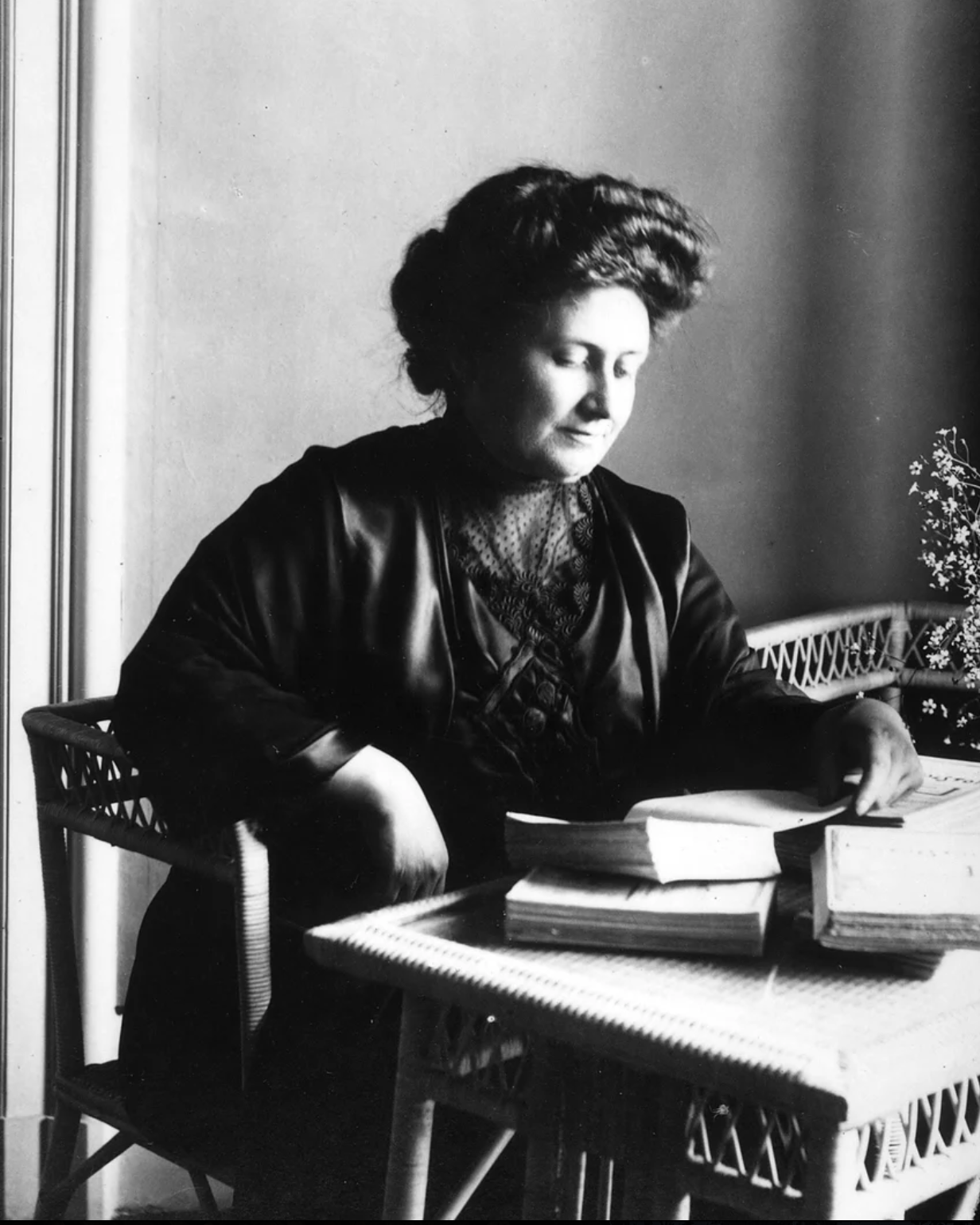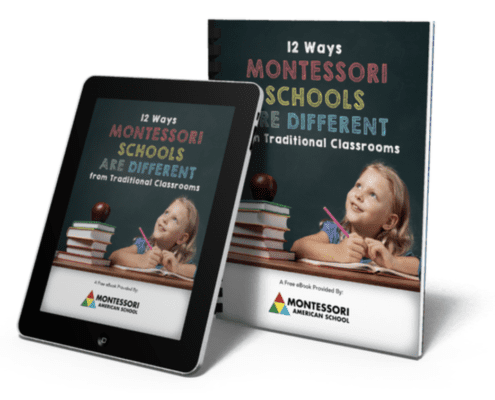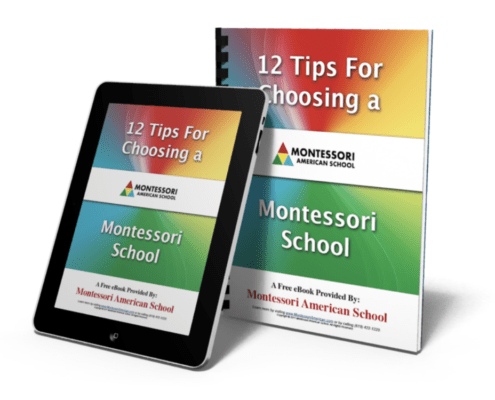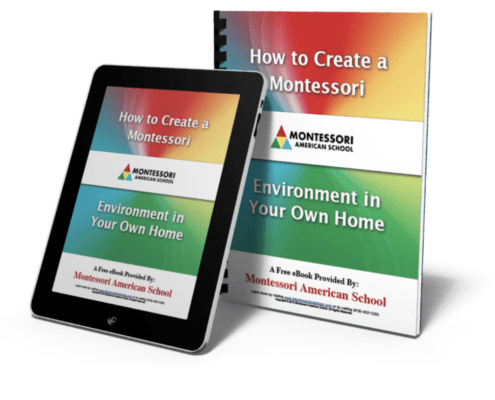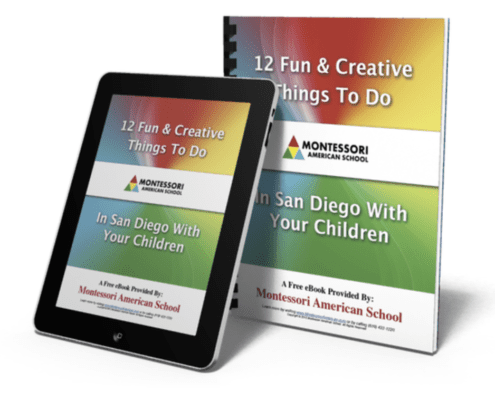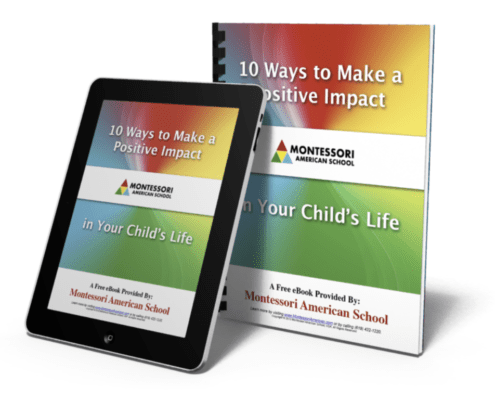Learn about Montessori
What is Montessori?
This is a very common question that we get from parents. Basically, it’s an educational method where multi-aged children are grouped together based on their periods of development. They learn in a family-like setting that allows each child to experience a variety of roles. As the youngest in the group, the child learns from the older children. They then assume greater responsibility as the “middle” children, and are role models when they become the oldest in the classroom setting. This gives them the unique opportunity to learn from and teach each other.
Maria Montessori
This method was founded by Maria Montessori who was an Italian physician, educator, and innovator, acclaimed for her educational method that builds on the way children naturally learn. She opened the first Montessori school—the Casa dei Bambini, or Children’s House—in Rome on January 6, 1907. Subsequently, she traveled the world and wrote extensively about her approach to education, attracting many devotees. There are now more than 22,000 Montessori schools in at least 110 countries worldwide. Utilizing scientific observation and experience gained from her work with young children, Maria designed learning materials and a classroom environment that fostered the children’s natural desire to learn. News of the school’s success soon spread through Italy and by 1910 Montessori schools were acclaimed worldwide. To read the rest of her biography visit AMSHQ.org.
Free eBooks
Montessori American School has been open since 1988 and the questions we’ve received from parents remain the same. How will a Montessori education benefit my child? What’s the difference between a Montessori school and one that’s traditional? How can I create a similar learning environment at home for my children?
In 2011, we realized the need for short, yet helpful guides to help you understand the benefits of enrolling your child at Montessori American School. So we wrote a couple of eBooks that you can download for free. Please enjoy and feel free to share them with others.
12 Ways Montessori Schools are Different from Traditional Classrooms
We never met a parent that didn’t want the best education for their child. But many parents aren’t sure what that entails. If you’ve arrived at this page, chances are you’ve heard about Montessori teaching methods but you’re not sure how they’re different than traditional classrooms.
If that’s the case, then you’ve found the perfect resource, conveniently packaged for you in this free eBook. Here’s a peek at what’s inside:
- Unique learning environments
- Specialized materials used at Montessori schools
- Teachers act as guides
- The value of making mistakes
- Instilling independence
Our hope is that you realize the vast benefits of enrolling your child in a Montessori school, even if it’s not ours. 🙂
12 Tips for Choosing a Montessori School
When searching for a preschool or kindergarten for your child, make sure you do your homework because not all methods of education are equal. You’ll want to ensure that the school focuses on building your child’s confidence, independence, and self esteem while teaching respect for others.
Like many parents, you may be unaware of the benefits that a Montessori education can provide which is why we decided to create a free eBook called 12 Tips for Choosing a Montessori School. Not only will you learn about the advantages of enrolling your child in a Montessori curriculum, but you’ll also find out what sets our Chula Vista school apart from the competition. Here is a sample of what you’ll find out when you download this free resource:
- The proper student/teacher ratio in a Montessori classroom
- Montessori American School’s track record of academic excellence
- The importance of having teachers who are AMI or AMS certified
- Available enrichment programs such yoga, Spanish, music, and art
How to Create a Montessori Environment in Your Own Home
Montessori education is enhanced if you provide a consistency between your child’s home and classroom. This does not necessarily mean you need to put Montessori materials in your living room, but simply that you should apply the Montessori perspective.
The principles developed for teachers by Maria Montessori can also be used by parents. This helps set the pace and expectations for your child, as well as direct their attitude and establish limits. By providing an extension of the Montessori classroom lessons at home, parents can supplement and promote their child’s self-education. In this eBook you’ll learn:
- Recipes your children can help with
- A child’s developmental stages
- Household chores children can perform
12 Fun & Creative Things to do in San Diego with Your Children
San Diego, California and the surrounding areas are virtually a playground for families. With that in mind, Montessori American School decided to compile a list of 12 Fun & Creative Things to do in San Diego With Your Children, and you can download this free eBook simply by subscribing to our eNewsLetter below. Don’t worry, we won’t spam you and we won’t share your information with anyone.In this eBook, you’ll learn about fun and interesting attractions in our area to take your children to such as:
- The Point Loma Tide Pools
- The New Children’s Museum
- Balboa Park
- The SEAL Tour
Eight additional attractions are highlighted in this eBook that will enrich both you and your child’s lives and help them to develop a love for learning… which is exactly what we teach in our early childhood programs.
10 Ways to Make a Positive Impact in Your Child’s Life
Although no parent is perfect and we all have to deal with certain hurts, hang-ups, and habits from time to time, the ultimate goal for most parents is to make a meaningful, positive impact in the lives of their children. After all, what is the point of parenting a child if you’re not going to make a positive impact in their life?
But it’s not always easy to make the right choice for your child or which direction you should steer them in order to help them learn life’s important lessons. This eBook is meant to help you, the parent with things like:
- Improving your parenting skills
- Implementing a proper diet for your child
- Encouraging self sufficiency in your child
- Helping your child learn, rather than always teaching them
We hope you’re able to absorb some of the lessons in this eBook and implement them in your own parenting plan.

